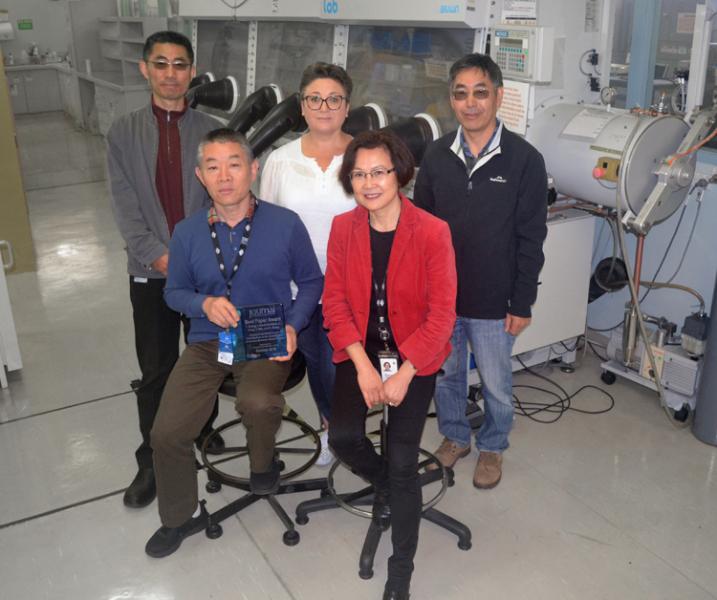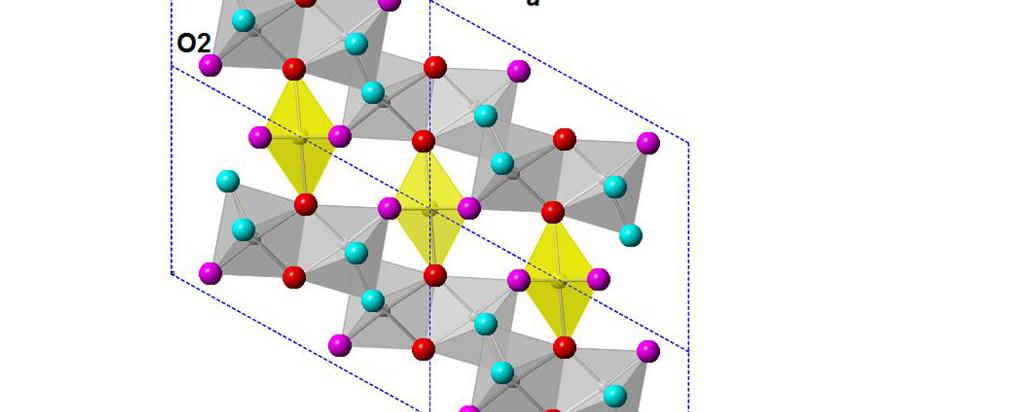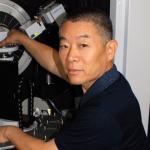

Published on the 2nd December 2019 by ANSTO Staff
The Journal of the American Ceramic Society has selected a paper by an ANSTO team to be among the top 19 best papers from over 600 studies published in 2018. The research led by nuclear fuel cycle researcher Dr Yingjie Zhang exemplified excellence for the science of advanced ceramics.
Zhang travelled to the Awards Symposium held at the Materials Science and Technology 2019 conference in Portland, Oregon in the United States to give a presentation based on the paper and receive the award.

(Standing left to right standing) Dr Tao Wei, Dr Inna Karatchevtseva, Dr Linggen Kong, (front row left to right) Dr Yingjie Zhang and Dr Zhaoming Zhang
Co-authors on the paper included Dr Inna Karatchevtseva, Dr Linggen Kong, Dr Tao Wei, and Dr Zhaoming Zhang.
The paper investigated the material s characteristics of brannerite-structured glass-ceramics and their capacities as waste forms to host actinide-rich radioactive waste from the nuclear fuel cycle.
“We concluded that the materials, hybrid brannerite glass-ceramics, were among the good candidate waste forms for actinide–rich radioactive wastes due to their higher waste loadings and chemical durability,” said Zhang.
It was the third in a series of four papers on the titanate-based glass-ceramics. The paper that received the award reported on structural and spectroscopic investigations of the uranium brannerite phase crystallizing in glass.
The team used X-ray diffraction, Raman spectroscopy, scanning electron microscopy, diffuse reflection and X-ray absorption near- edge structure (XANES) spectroscopies in the study.
“Such titanate-based glass-ceramic waste forms have obvious advantages over the conventional borosilicate glass and multi- or single-phase ceramics,” said Zhang.
“Brannerite, which is a uranium titanate, is a good choice for addressing spent reactor fuel and related radioactive wastes which may contain some lanthanides and other processing impurities. “
“ANSTO started developing composite materials as potential waste forms for actinide-rich waste streams in the 1990s. In more recent years we focused on titanate phases such as pyrochlore and brannerite, as they allow higher actinide waste loading—thus leading to reduced volumes for the final waste forms.”
“The developed glass-ceramic waste forms combine the chemical and processing flexibilities of glasses with the excellent chemical durability of ceramic phases, to ensure that processing chemicals, which might not be able to be incorporated in the ceramic phases, can be accommodated as well as actinides.”
In 2018, Zhang was also identified in the Australian as a national leader in crystallography and structural chemistry on the actinides and lanthanides.
For more information
